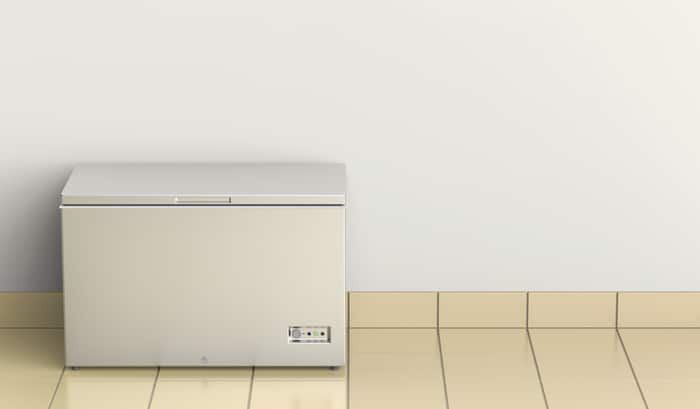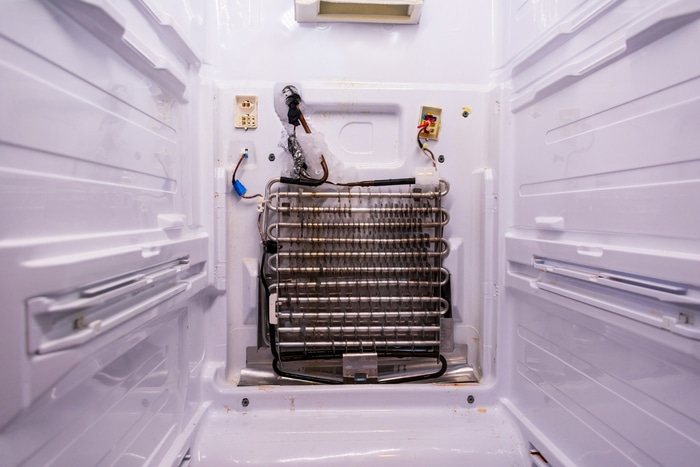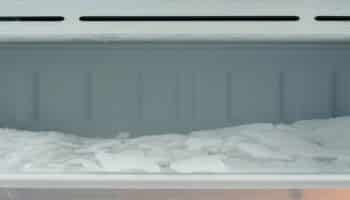Need to move your freezer to a different location and are wondering if you can lay it down?
That’s the age-old question! As opposed to other, more transport-friendly appliances, large machines, like freezers, fridges, and tumble dryers have always given their owners a hard time when they need to be moved.
This is not only due to the sheer size and weight of the units, but also because some of them, like freezers, have internal fluids and components that can be affected when transported the wrong way.
But don’t worry, you came for answers and that’s precisely what you’ll get. Below, you’ll find a small piece including the things you need to look out for before laying your freezer down, as well as some tips you might find useful.
Keep reading to move your appliance around safely!
Can You Lay a Freezer Down?
The short answer to this question is: yes. However, to do it safely and without permanently damaging your appliance, you must do it carefully and under the right conditions. To explain this in more detail, let me walk you through how a freezer works and why it’s essential to understand this.

How Do Freezers Work?
You might be wondering why you have to know this. After all, you just want to move the appliance to another location or lay it down for a little while. Can’t you just skip to the part where this is explained?
Sadly, no.
Troubleshooting, maintaining, and moving a large appliance such as this one requires at least basic knowledge of how its internal processes work in order to prevent issues from arising down the road. So, having said that, let me delve into the cooling cycle in more detail:
- A substance called refrigerant is pumped through a set of coils with the help of a compressor.
- The compressor presses the refrigerant into gas that is then sent to the condenser coils.
- In these coils, the gas is converted to a hot liquid.
- As the liquid travels through the condenser coils, heat is dissipated.
- After the liquid travels through said coils, it then goes to the evaporator coils.
- Once it enters this area, the liquid refrigerant turns back into a gas, which cools the evaporator coils down.
- After this happens, the gas is sent back to the compressor, where it gets converted into liquid again, thus completing the cooling cycle.
You might have to read these steps more than once (I know I did when I was first learning about this). There’s no shame in taking some extra time to learn the ropes properly. We all have to start somewhere!
Why You Can’t Just Lay Your Freezer Down
Now that you have a basic understanding of how non-commercial freezers work, you might have already figured out why laying yours down and moving it around is not as simple as it might have seemed before.
You have to consider several components and substances before even tilting the appliance, as failing to take this into account can bring about several issues. Let’s talk about the most common ones.
Liquid Refrigerant Seeping into the Evaporator Coils
As you learned in the section above, there’s a complex process involved in cooling a freezer and making it work as designed. Some parts of the appliance are not meant to be in contact with liquid, just gas, and vice versa. Messing with this balance could create serious issues, and render your unit useless after moving it.

If you lay your freezer down improperly, liquid refrigerant could leak into the evaporator coils, which cannot handle the substance in that state. An event like that can cause permanent damage to your appliance, costing you hundreds, if not thousands of dollars in repairs and replacements.
Dislodged Components
Yet another reason why you can’t just lay your freezer down without taking the proper precautions, is that you could accidentally dislodge a component while you’re at it.
Freezers are sturdy appliances designed to work for years, if not decades. However, they’re not meant to be moved too frequently, so there aren’t too many countermeasures in place to prevent issues during relocation or repositioning.
If you’re not careful, you could find yourself in a situation where one or more of the internal parts of your unit comes loose or is disconnected altogether, leaving you with a big problem.
Compressor Oil Leaking
Lastly, let’s talk about another liquid that could cause a world of trouble – the oil within your compressor. As discussed earlier, your freezer uses this part to push the refrigerant to the coils inside the unit, thus making the cooling cycle possible. In order to work properly, your compressor needs lubrication, which is where the oil comes in.

That being said, this substance should always remain within this component, as having it elsewhere can affect your appliance permanently. If you lay your freezer down the wrong way, oil leaks can happen, and you certainly don’t want that.
How to Lay a Freezer Down Properly
Now that you know all that can go wrong when going about lying your freezer down or relocating it, let’s talk about the right way to go about this. Freezers are very heavy and chunky, so it can be hard to manipulate them on your own. If possible, try getting someone to help you, as this process is much easier if done by two people:
- Unplug the appliance a couple of hours before moving it, as this will help with defrosting.
- Remove all your groceries and trays from the freezer.
- Make sure all the doors are closed and taped shut.
- Place the power cord somewhere safe or tape it to the unit’s body to prevent it from getting in the way.
- Get a dolly to carry the freezer and place a blanket around the appliance to prevent scratching.
- While facing the doors, tilt the freezer to either the right or left side, so that they rest on the dolly.
- Try your best to minimize excessive tilting. Ideally, you’ll want to stay within 45 degrees of inclination respective to the floor.
- If you have to lay the appliance down completely, make sure that it’s for short periods, and wait a while before plugging it back into the wall outlet.
As you can see, with the proper amount of care and the right tools, you can move your freezer somewhat freely.
Should you lay it down completely? No. If possible, I’d avoid doing this. However, this doesn’t mean that if you do, the appliance is done for. As long as you minimize this and make sure it happens over short periods, everything should be fine.
Conclusion
That about covers it.
Wondering whether you can lay a freezer down is only natural. Although you won’t be moving the appliance every day, understanding the dos and don’ts is crucial.
I hope this piece has helped you better understand how freezers work and what you need to do to safely lay yours down without expensive consequences. In most cases, keeping the refrigerator and compressor oil in mind should be more than enough to prevent accidents.
Thank you very much for sticking with me all the way to the end. If this article answered your most burning questions and proved useful, you’ll be happy to know that there are tons of other resources you can keep learning from below.
On the site, you’ll find solutions for everyday appliance issues, such as an oven that keeps burning your food, or a freezer that keeps tripping your circuit breaker.
I wish you the best of luck!
— Craig.






